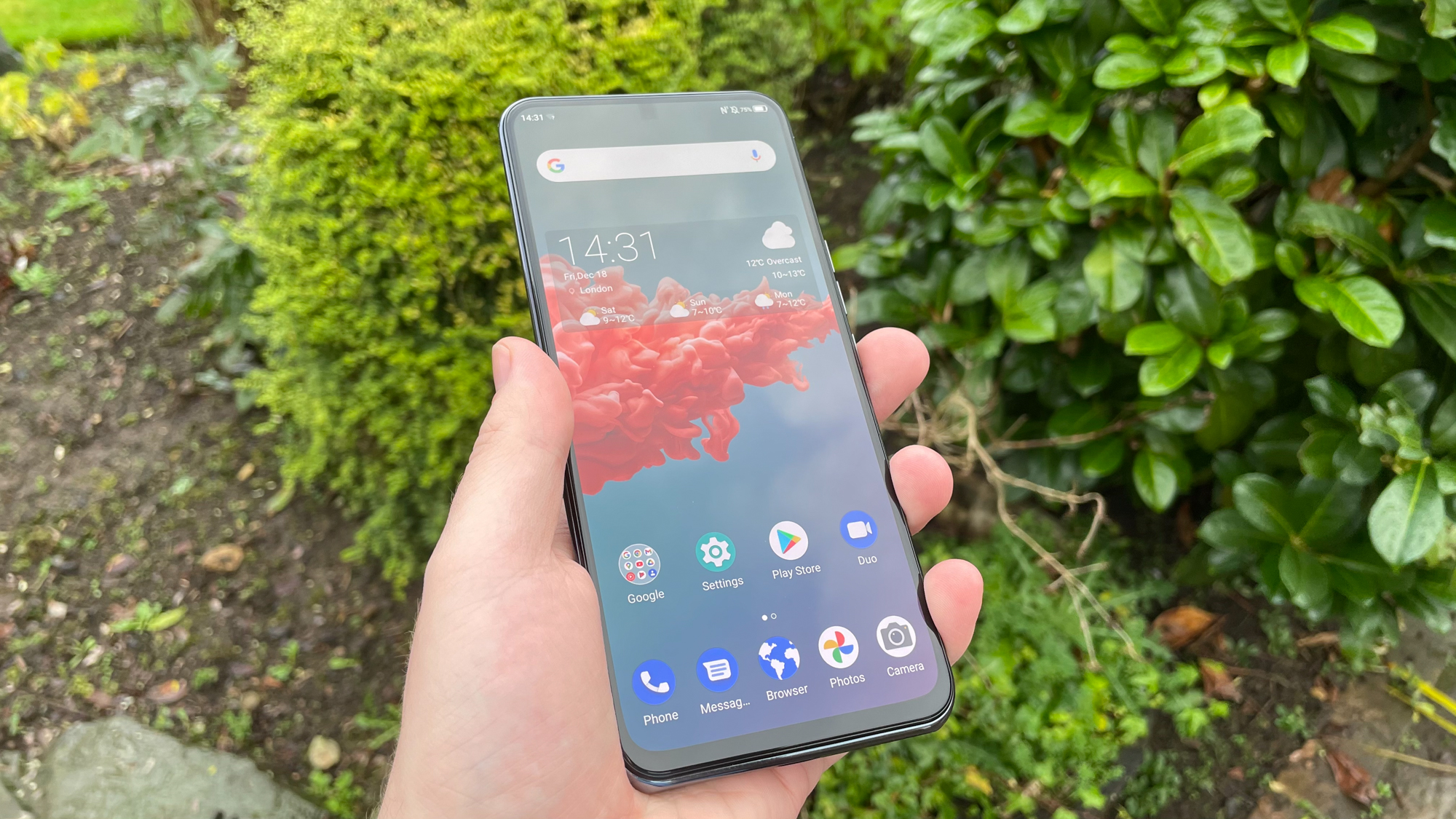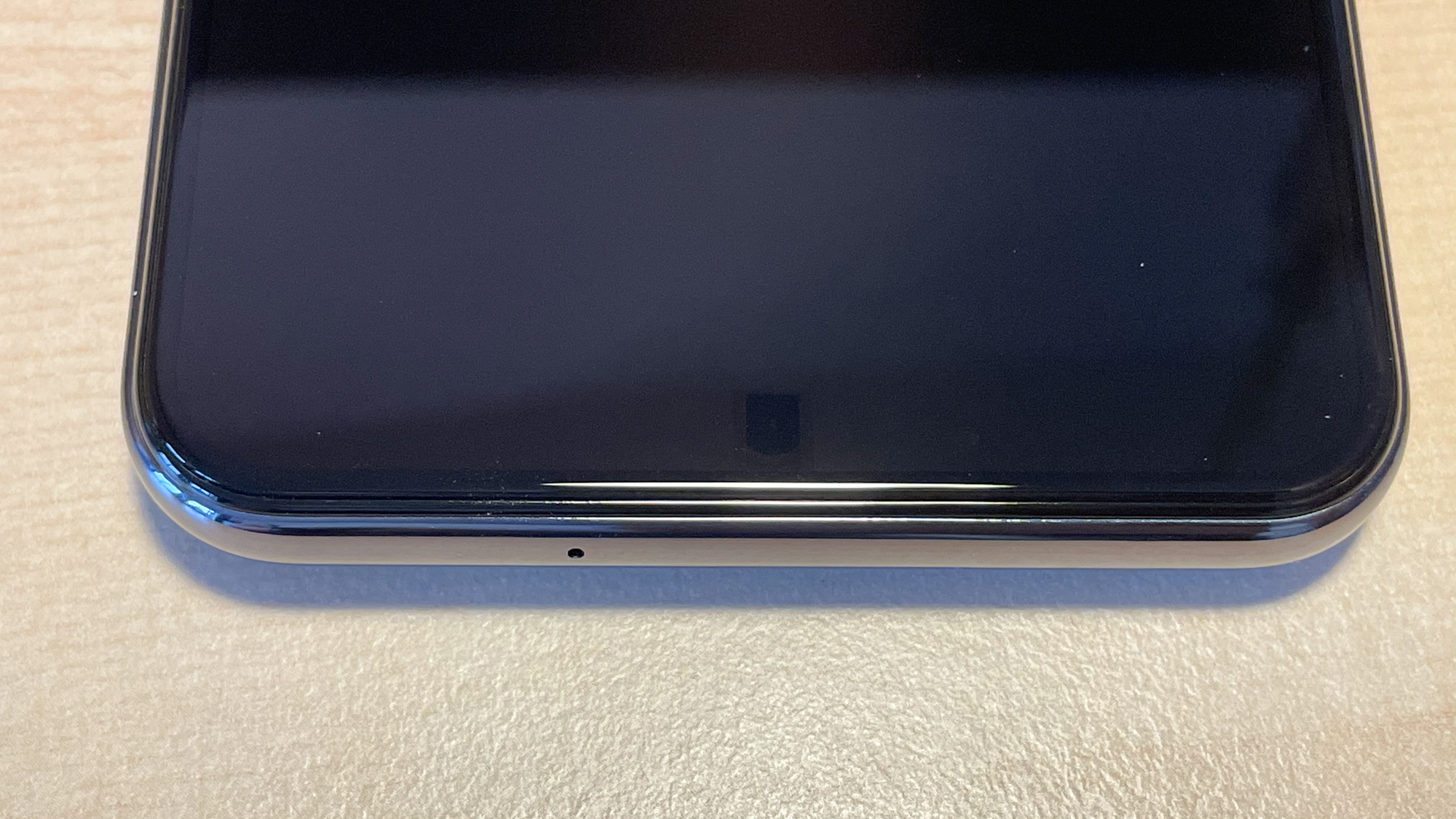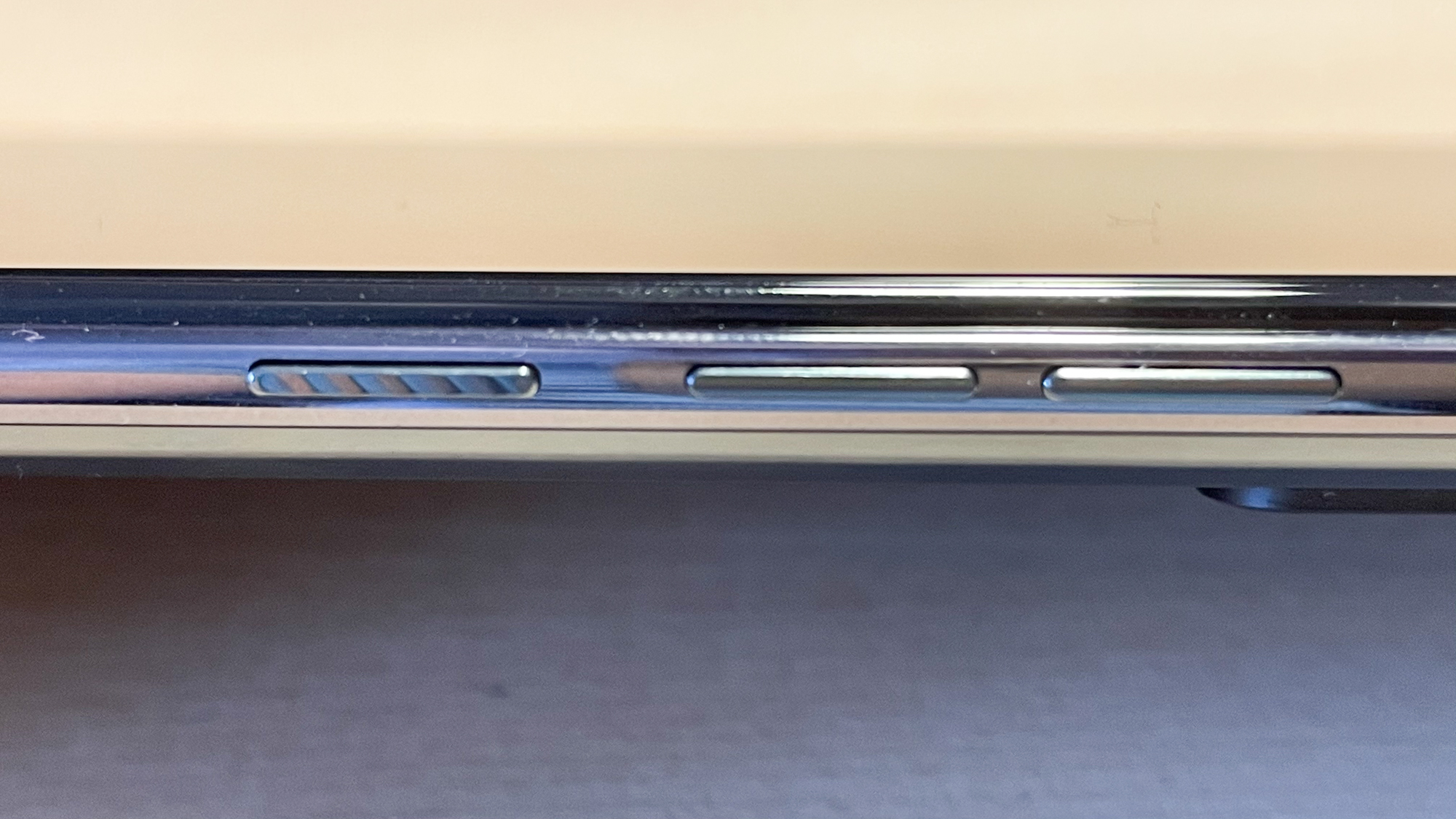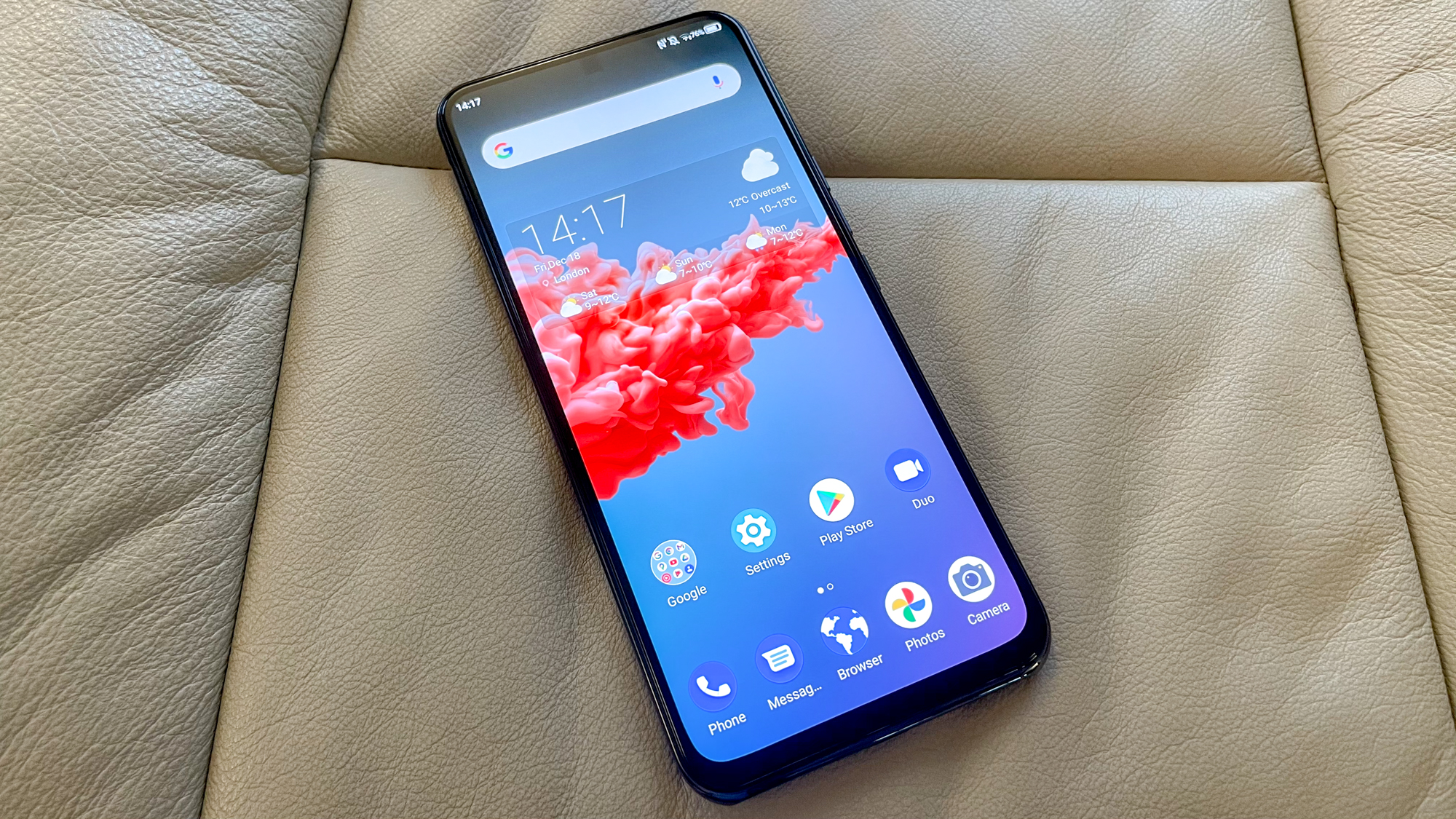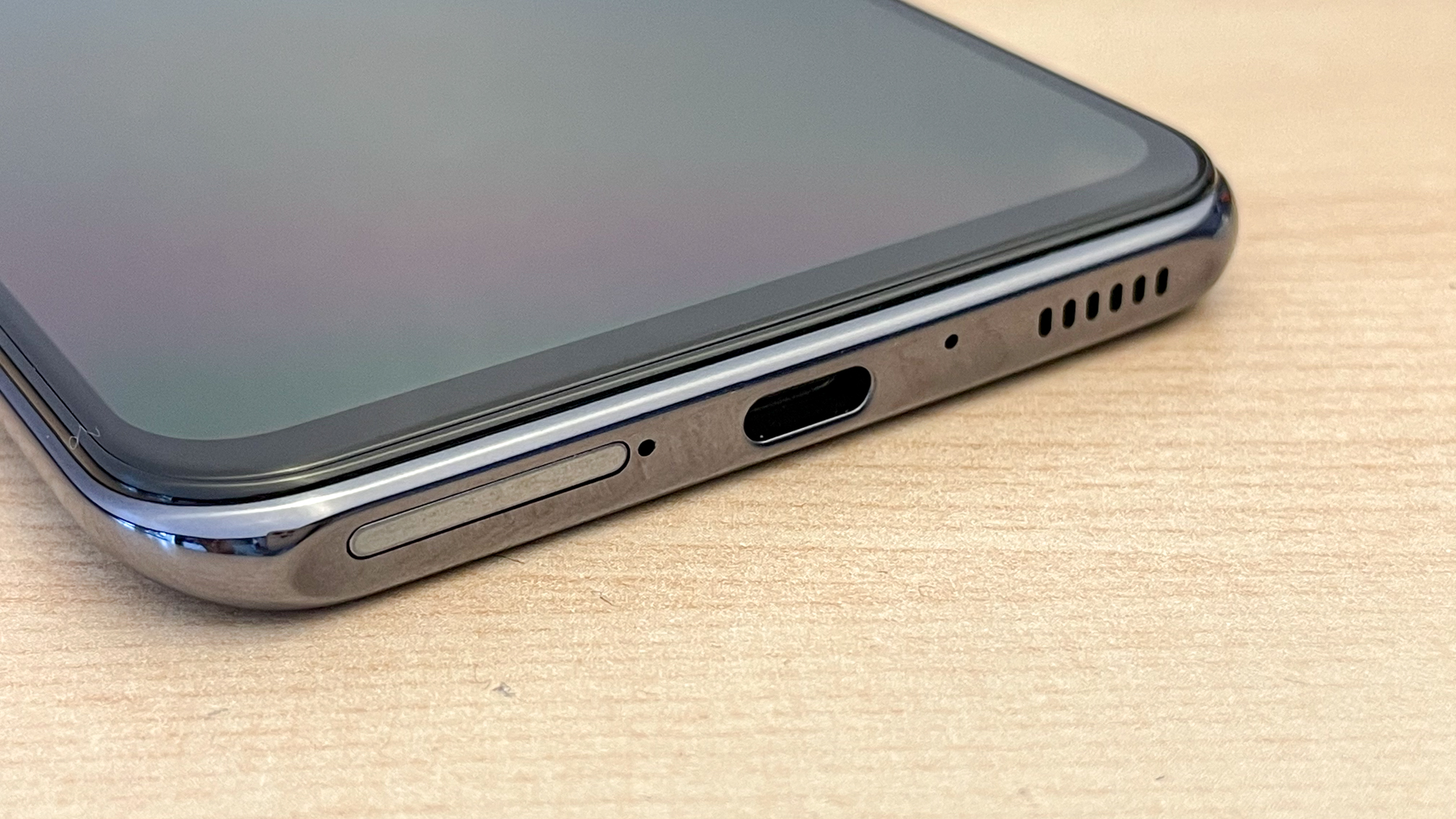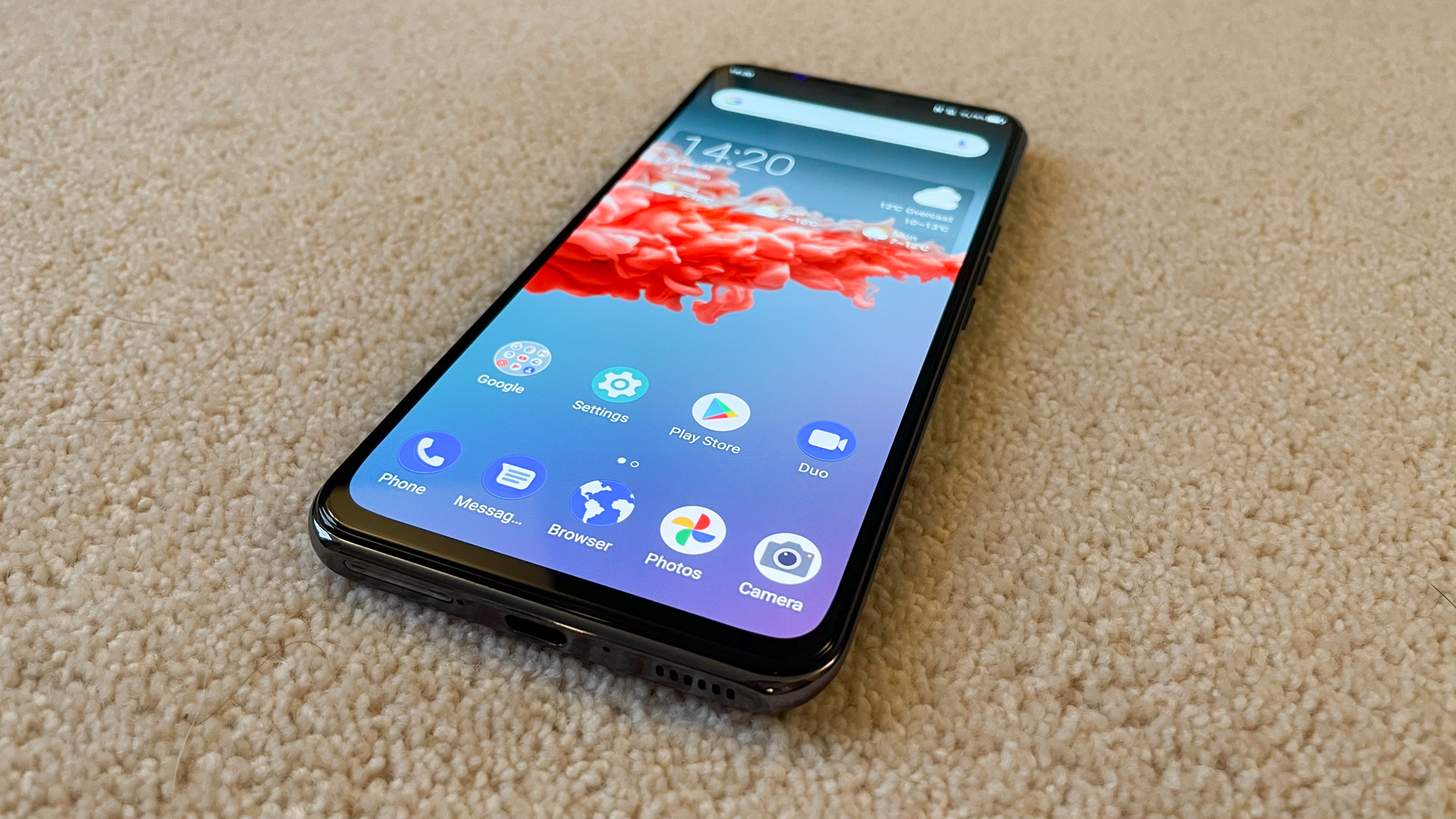Tom's Guide Verdict
While you may initially be astonished by how reasonably priced the Axon 20 5G is given under-display camera, you'll eventually find a fairly average smartphone.
Pros
- +
Huge high-quality display for price
- +
Futuristic selfie camera
- +
Decent performance
Cons
- -
Unusual, unergonomic design
- -
Finicky photography
- -
Weak speakers
Why you can trust Tom's Guide
Starting price: $449/£419
Display: 6.9-inch OLED (1080 x 2460), 90Hz
Rear cameras: 64MP main (f/1.8), 8MP ultrawide (f/2.2), 2MP macro (f/2.4), 2 MP depth (f/2.4)
Front camera: 342MP (f/2.0)
Chipset: Qualcomm Snapdragon 765G
RAM: 8GB
Storage: 128GB
Expandable storage: MicroSD up to 2Tb
Battery: 4220 mAh
Charging: 30W wired
Operating system: Android 10 with MiFavor 10.5
Size: 6.78 x 3.07 x 0.31 in (172.1 x 77.9 x 7.9 mm)
Weight: 6.98 oz (198g)
Usually, buying a slice of cutting-edge tech can be costly. But not so with the reasonably priced, boundary-breaking ZTE Axon 20 5G. The Chinese phone maker claims to have made the first commercial phone in the world with an under-display selfie camera, allowing a display-viewing experience unspoiled by notch, bezel or punch-hole.
In this ZTE Axon 20 5G review, you'll see why we think the phone is another example of a strong mid-range Android device, offering an acceptable level of performance and enough premium features to satisfy users who don't want to spend huge sums of money on a flagship device. The Axon 20’s unique front camera, combined with the huge display and a good amount of computing power, makes this phone particularly a delight for movie watching and gaming.
But you can’t buy the ZTE Axon 20 5G in the U.S. You can also find many of the same features on cheaper, more readily available phones. We prefer the OnePlus Nord and especially the Google Pixel 4a 5G for its better camera, but the Axon 20 5G is worth a look.
ZTE Axon 20 5G review: Price and availability
While the ZTE Axon 20 5G is the first phone of its kind in some respects, it only costs $449 or £419. That's slightly more expensive than the equivalent 8GB RAM OnePlus Nord, or £80 less than the Pixel 4a 5G.
ZTE launches the phone globally via the ZTE online store on December 21 It will be available in the U.K., but not the U.S. American readers who like the sound of the Axon will need to go through alternative online retailers or auction sites to get one, which requires a little more care and attention than just going to your local phone store, but is still manageable if you're willing. Only one version is on sale, providing you a black back, 8GB RAM and 128GB storage.
That initial launch is very limited however. You need to get an invite from ZTE's website to be able to order the phone; in return you will get a free pair of ZTE LiveBuds earbuds. If you miss out on this first batch, the Axon will go on sale more widely next year.
ZTE Axon 20 5G review: Design
The moment you pick up the ZTE Axon 20 5G, you'll notice it's a big phone with its 6.9-inch display. At 6.9 ounces, however, it feels oddly light for the size. That's good news since you'll regularly need to change your grip to access all the icons across that enormous screen unless you have larger than average hands.
Get instant access to breaking news, the hottest reviews, great deals and helpful tips.
While the top of the phone looks futuristic with its hidden camera, the bottom looks a few years out of date.
Casting your eyes to the bottom of the display reveals one of the chunkiest chin bezels on a smartphone I've seen this year. It seems that what ZTE has given with one hand it's taken away with the other.
Around the rather prominent metal side rail of the Axon 20, you have the trio of power, volume up and volume down buttons on the phone's right-hand side, then the SIM tray, USB-C port and speaker on the bottom. While the phone feels well put together, there is a noticeable “step” between the display and the rail, which not only makes the phone feel unusual when gripping it tightly, but also has me worried that there's no protection at all for this sophisticated display should I drop the phone.
Flipping the phone around, you see some fairly large Axon 5G and ZTE branding, plus a rectangular camera array containing four sensors. The main 64MP camera gets a special mention on the camera bump itself, but none of it is particularly distracting thanks to a classy silver font color.
I found myself entranced by the Axon 20’s color. The black is pretty plain, but the effect ZTE has added to the glass creates waves depending on how the light hits it. It looks like the little islands and channels that the tide creates on a sandy beach. Even in this dark colorway, this phone will draw attention to itself if you place it on a table in front of your friends.
ZTE Axon 20 5G review: Display and sound
The Axon 20 5G's display measures a considerable 6.9 inches diagonally. ZTE uses an FHD+ OLED panel with a 90Hz refresh rate and 10-bit color. But this obviously pales in comparison to the fact that the screen has a disappearing camera hidden underneath it, making what ZTE calls a "True Full Display."
We'll talk about the quality of that camera's images later on, but its impact on the display depends on what you're doing. The patch of pixels that hides the camera is noticeably lower-res than the main display around it, but ZTE has done its best to hide the camera. The included wallpapers are all dark at the top of the screen, which is when the effect is least visible. If you get an all-white webpage or settings menu, however, it looks kind of ugly.
Sure, these are problems I wish didn't exist, but in the context of the wider phone market, ZTE’s under-screen camera is really quite impressive. As an iPhone 12 Pro user, I have to contend with the top center of my display permanently being unusable because of the camera/Face ID notch, but I don't really mind it.
Watching the trailer for The Falcon and the Winter Soldier on the Axon 20 showed where this phone excels. The small square of irregular-looking display is easily overlooked when you have 6.9 inches of panel to enjoy Bucky Barnes and Sam Wilson teaming up.
What's harder to ignore is the sound. As well as hiding the camera underneath the screen, ZTE have also fitted an under-display top speaker. While it's OK when making a phone call, if you're trying to listen to music it's basically like listening to a mono speaker.
The sound of Taylor Swift's "Willow" was pretty average from the Axon 20, which produced Swift's voice, piano and guitar nicely but none of the top or bottom end. The trouble is a misplaced palm will easily stifle the music unless you press your ear to the top of the phone to hear the tiny amount of sound coming from the under-display speaker. The Pixel 4a 5G's stereo speakers are far better balanced, and Google’s phone was actually able to play some of the less prominent of the latest Swift single too, like the violin or backing vocals.
ZTE Axon 20 5G review: Cameras
Normally I'd try out a phone's rear cameras first, but the Axon 20 5G is a special case, so we'll start with its 32MP front camera, hidden beneath the display. ZTE has used some clever hardware to create what is effectively a tiny one-way mirror in the display with transparent layers and a redesigned matrix of pixels. There's also some software trickery involved to overcome the color, contrast and focus issues that putting a camera behind the display creates.
I took a series of portrait mode and standard selfie shots with the Axon’s front camera, followed by the same shots with the Pixel 4a 5G and my regularly-used iPhone 12 Pro, the device I consider the benchmark for good photography.
With portrait mode on, the Axon produces an OK image, but one that I think the Pixel handles better. Not only is the cutout around my head and shoulders neater on the Pixel, but its post processing has had some restraint, making the photo look a lot more natural than the overly-smoothed one produced by the Axon. As is common with Chinese phones, selfie mode on the Axon automatically enables a set of beautification tools, although I disabled them before taking these shots.
Turning off the bokeh effect, we see again how much brighter the ZTE's image is compared to the Pixel's. It's good to see that the Axon's photo performance isn't harmed too much by the display in the way of its sensor, but the Pixel remains my favorite for self portraits. Brightness in an image is one thing, but altering the colors to the point where they no longer represent reality is a step too far. Plus, the background still looks weirdly blurry even though we're not in portrait mode.
The difference is even greater when comparing the standard selfies of the Axon and the iPhone 12. Apple's mix of 12MP selfie camera, a depth sensor and some subtle post processing make its image look much better.
With portrait mode on, I still remain firmly in favor of the iPhone's picture. The Axon makes me look like I'm trapped in a magical dream sequence instead of standing in my parents' backyard; due to its softer focus and positively glowing color temperature.
Hopefully these images are evidence that the under-screen selfie camera can still produce acceptable pictures, but you can do better, both in general and in this price range. Personally I'm only going to be certain an under-display camera is a good idea when a manufacturer with a better reputation for smartphone photography tries out this kind of display. ZTE is blazing a trail, but as is often the case, first doesn't mean best.
Moving to the back camera array now, we'll start with the ZTE's centerpiece 64MP sensor. Typical of a sensor this size, it takes very bright photos, which you can see in this picture of a forest path.
The Pixel 4a produces much richer colors, at the expense of accuracy to the original scene. I like both images on balance, but main sensors have to deal with more than just straightforward shots like this.
Heading back out at twilight to try the phones’ respective night modes, I was not confident that the ZTE had what it took to challenge Google's industry-leading Night Sight low-light photo mode. That prediction came true, as you can see below. There is far more to see in this picture of a bare tree on the Pixel 4a's shot than on the Axon's, both in terms of color and detail, although the Pixel's photo looks more obviously post-processed.
To make matters worse, it took the Pixel 4a about 2 seconds to take the picture, and before that it showed me a good estimation of the final image through the viewfinder. The Axon took about 8 seconds from pressing the shutter button to completing the capture, and I didn't know what the final shot would really look like until I checked it afterward in the gallery.
You'll find the Axon 20’s 8MP ultrawide camera above the main sensor at the top of the camera stack. We see in this shot overlooking a golf course fairway that the image from the Pixel 4a's 16MP ultrawide sensor is much more saturated than the ZTE's, which doesn't have a resolution advantage to fall back on. Whether it's the sensor size or the post processing that's responsible, the Pixel's image is much better looking.
The third main sensor on the ZTE is the 2MP macro camera. In theory, this allows you to take great extreme close-ups or photos of small objects. But unfortunately like all other macro cameras we've tested lately, the result isn't that good.
This photo of a pot plant is obviously noisy and dark. That could be improved with some better lighting, but that goes against the snapshot-style photos most users want to take. The Axon is yet more proof that smartphone macro cameras are a waste of time.
Finally, we have the Axon’s depth sensor, which doesn't take its own photos but helps add depth to other shots. It's a little finicky to use, since there's both portrait and bokeh modes available in the ZTE's camera app. The former relies on you taking a picture of a person, which I only found out after taking a picture and noticing there was no background blurring.
With the correct setting selected, I once again took pictures of Lola the cavachon. I'm pleasantly surprised with the quality of both shots, and find it hard to pick between them. I like the depth of field present on both phones, and don't have much of a preference between either phone's representation of the colors in the scene. This is probably my favorite of all the photos I took with the ZTE, and goes to show how adding a depth sensor can benefit any phone.
With so many strong competitors around this price range, photography is something the ZTE desperately needs to get right in order to stand a chance. The Axon 20 has plenty of breadth in its photo arsenal thanks to the big main camera and the dedicated depth sensor. But the results don't compare well to the competition, so the Axon isn't going to ascend to the hallowed halls of our best camera phone list where the Pixel 4a 5G resides.
ZTE Axon 20 5G review: Performance
ZTE has given the Axon some decent silicon muscle for the price, but its power isn't limitless. Like many equivalent Android phones, the Axon uses a Snapdragon 765G chipset with a built-in Adreno 620 GPU, backed up by 8GB RAM.
On the Geekbench 5 benchmarking app, the Axon scored 606 in the single core test and 1876 in the multi-core test. That's appreciably better than the Pixel 4a 5G's 1,614 multi-core score, but a little worse than the 1,948 achieved by the OnePlus Nord, perhaps due to the Nord using 12GB RAM instead of just 8GB.
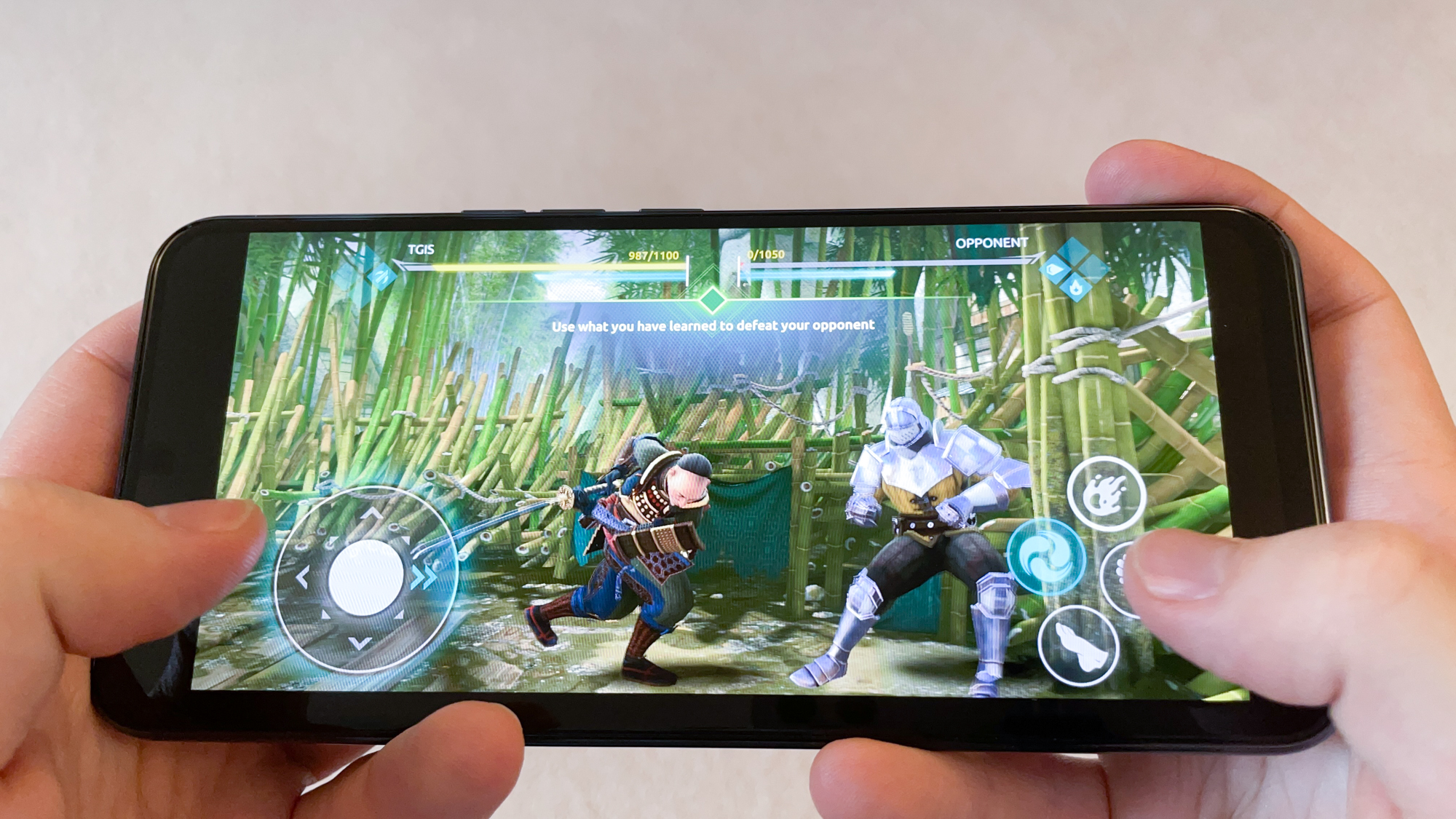
Graphically the ZTE gets some points back. On 3DMark's Wild Life graphics benchmark, the Axon scored 1,674 points and an average of 10 frames per second. That’s considerably better than the Pixel 4a 5G, which managed 1,199 points and 7 fps, despite sharing the same chipset and GPU.
That's some fairly decent performance from a phone with a mid-tier chipset in. What makes the Axon 20’s performance better is a rather effective three-part cooling system within the phone. I didn't notice the phone heating up much during testing or charging, so it remains comfortable to use even when you're putting it through its paces.
ZTE Axon 20 5G review: Connectivity
The name of ZTE’s phone gives away the Axon's 5G abilities. I was unable to test the speed while staying in the cell signal-free zone of Northumberland, England, but what is certain is that the Axon 20 only offers sub-6GHz 5G, not the mmWave sort.
This won't be a problem for U.K. users, as sub-6GHz is all we have right now. Go to the U.S. however, and mmWave is the mode of choice for Verizon and its customers, as well as a few other 5G-ready nations around the world like South Korea. If you're going to buy this phone, double check what signal bands it supports on ZTE's website and cross-reference them with the bands that your mobile carrier supports. Otherwise you may end up with a 5G phone that can't actually use 5G.
ZTE Axon 20 5G review: Battery and charging
For its physical size, the battery in the Axon is kind of small at 4,220 mAh. Usually when phones are pushing 7 inches in size, they can require as much as 5,000 mAh, but the Axon 20 still features an acceptable amount of battery to have.
We were unable to perform our usual battery rundown test, but I can report that playing fullscreen YouTube videos non-stop over Wi-Fi for an hour ate about 10% of the total battery capacity. That equates to enough juice for a full day's video watching, and likely longer if you're using the phone for less power-intensive tasks like messaging and social media.
If you were worried about that battery draining, rest assured that ZTE has charging sewn up. The Axon only offers wired charging, but at 30W, it's plenty quick. In our test, the phone filled up from 0% to 31% over 15 minutes, 61% over 30 minutes, and was filled to the brim by 58 minutes. That's not the fastest we've seen, but that's certainly respectable performance that will satisfy most users, equalling the 30W charger with the OnePlus Nord and beating the 18W charger of the Pixel 4a 5G.
ZTE Axon 20 5G review: Software
ZTE has equipped the Axon 20 5G with MiFavor UI, its take on Android 10. Unfortunately that means no Android 11 features, at least not yet. ZTE says it will be introducing the new version of Android soon.
While I don't think it's the most attractive version of Android I've come across, moving through the ZTE's menus is easy to understand and pleasant enough to look at. The only major difference is that the home screens loop around to the start when you reach either end, which to me makes more sense than having it artificially stop and make you scroll back and forth all the time.
What is also good is that the Axon 20 doesn't come with a bunch of pre-installed apps. Aside from the basic Google ones, all you get is a custom browser, a phone switching app, a game assist app, ZTE's customer support app, plus Facebook and WPS Office. If even these are too many, you can easily delete them or move them off of your home screen into the app drawer.
ZTE Axon 20 5G review: Verdict
If it weren't for its under-display camera, the ZTE Axon 20 5G would be quite an ordinary mid-range Android phone. This phone excels in multiple ways. The big notchless display makes the Axon 5G a compelling option for watching video and playing games (provided you plug in headphones to avoid using the sub-par speakers). And the disappearing selfie camera will draw as much attention as more expensive phones.
Overall, we prefer the Google Pixel 4a 5G because of its better cameras. And spending a little more money will net you the excellent OnePlus Nord, which is a pretty big step-up in UX and photography quality from the Axon 20 5G. Despite ZTE's impressive party trick, there are a few too many caveats to make this Android phone a top pick.

Richard is based in London, covering news, reviews and how-tos for phones, tablets, gaming, and whatever else people need advice on. Following on from his MA in Magazine Journalism at the University of Sheffield, he's also written for WIRED U.K., The Register and Creative Bloq. When not at work, he's likely thinking about how to brew the perfect cup of specialty coffee.

